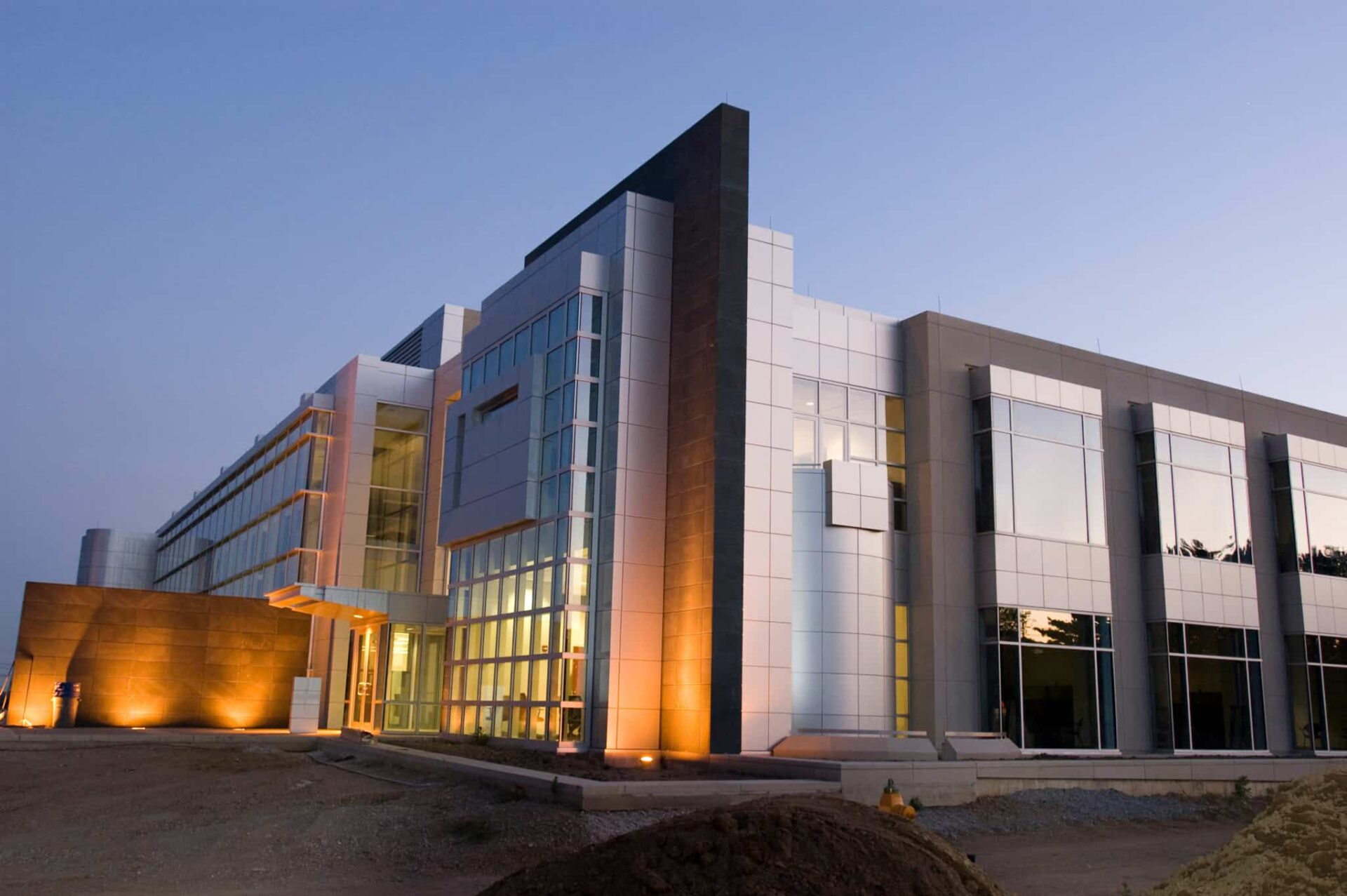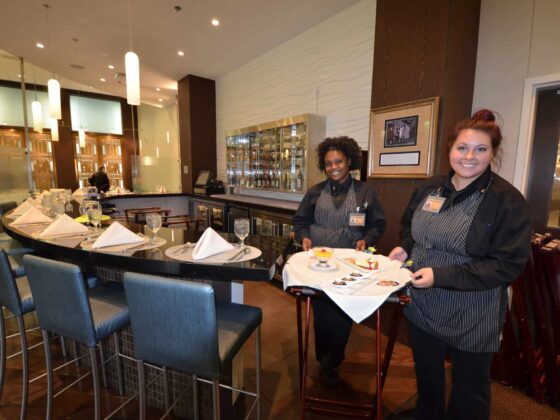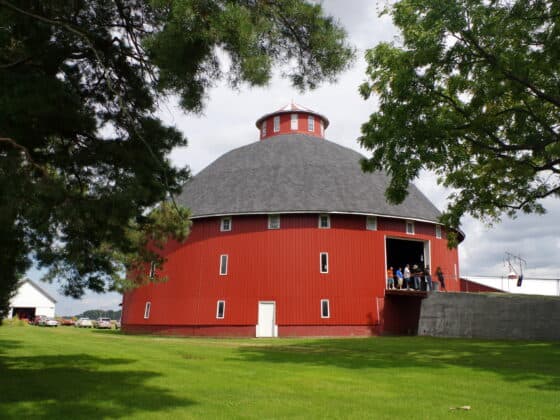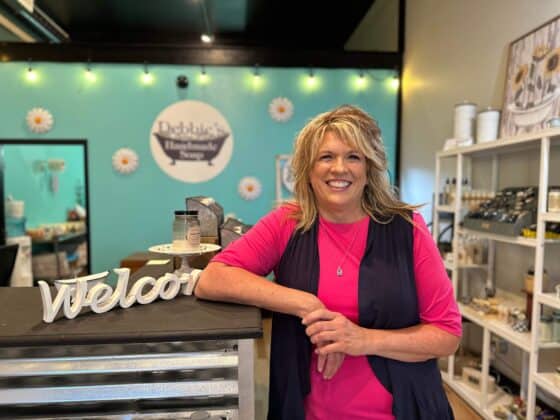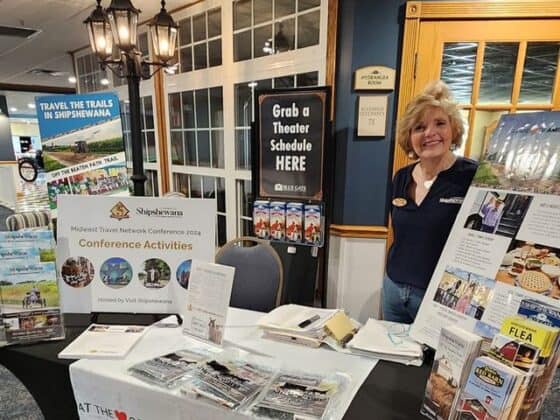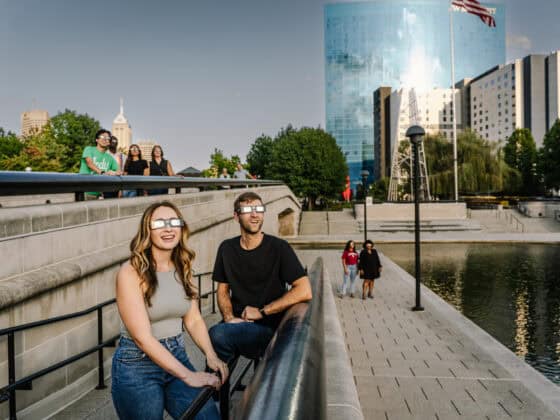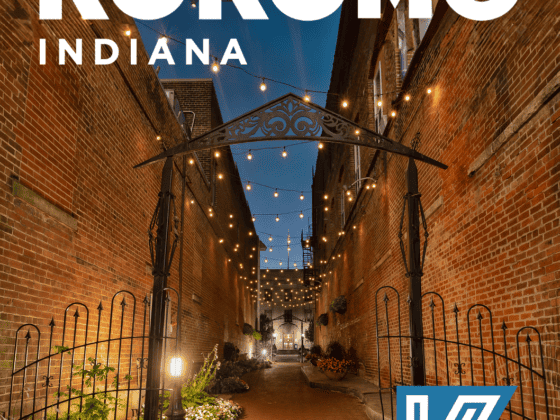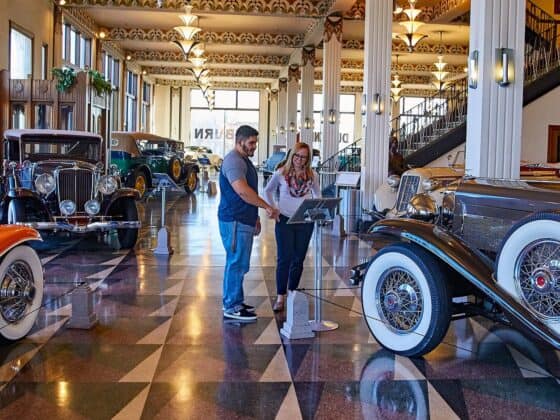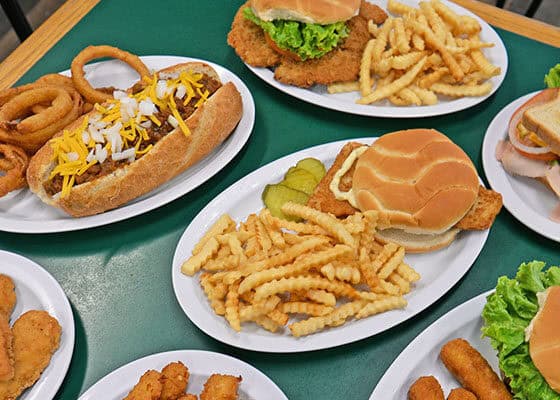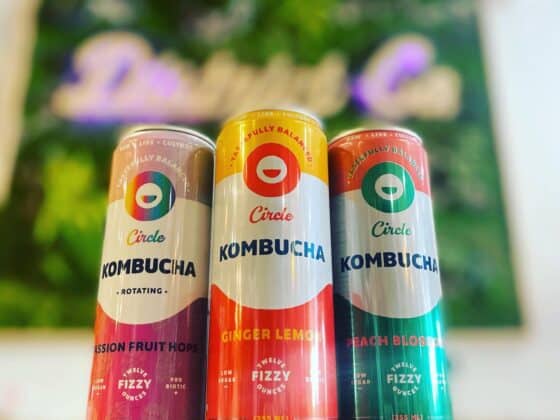By Kathy Mayer
The search is on, the quest underway to discover and create innovative, breakthrough ways to improve human health, sustain our earth and assure global security.
“Our researchers are tackling the biggest global challenges, right here in Indiana,” says Tomás Díaz de la Rubia, chief scientist and executive director of Purdue University’s Discovery Park, where the action is taking place.
Situated on a 40-acre site on the southwest edge of the West Lafayette campus, Discovery Park features seven buildings with combined space of nearly 300,000 square feet dedicated to state-of-the-art laboratories, research centers and entrepreneurial hubs.
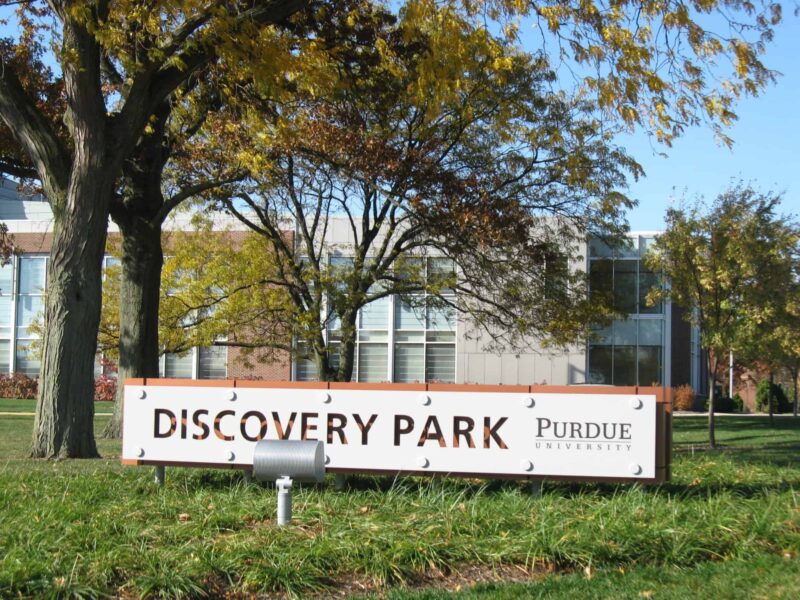
“Our unique facilities house the cutting-edge equipment and instrumentation needed to take on some of the most pressing issues facing our world today,” Díaz says.
GRAND CHALLENGE RESEARCH
At Discovery Park, hundreds from every sector of the university conduct research, collaborate and transfer their findings for commercialization, all to prepare our world for the future.
They often partner with other universities and organizations; and their work is global in scope, including Australia, China, Ethiopia, India, Peru, Nigeria, South Korea and other countries.
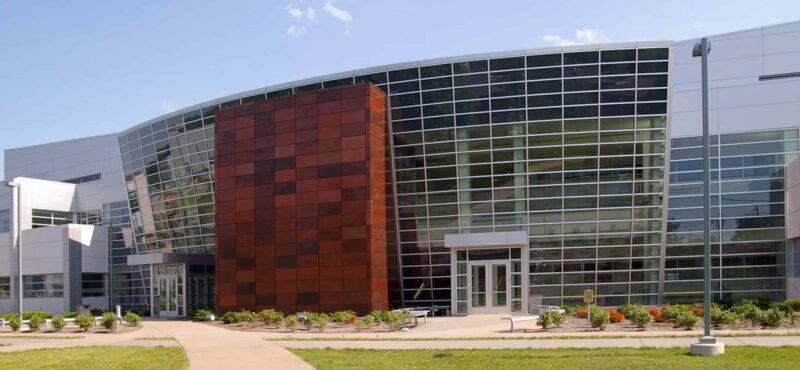
Research ranges from whole brain imaging to hybrid nanocrystals for biomapping, ecological acoustics, nanoelectronics modeling and using social media to respond during natural disasters.
SOLAR SYSTEM SCULPTURE A MUST-SEE
In the heart of the park stands the visually dramatic and educational sculpture, Visiting Our Solar System, “VOSS.” It honors Purdue’s deep history with the U.S. space program and alumna Janice Voss, an astronaut who completed five space flights before her death from cancer at age 55 in 2012.
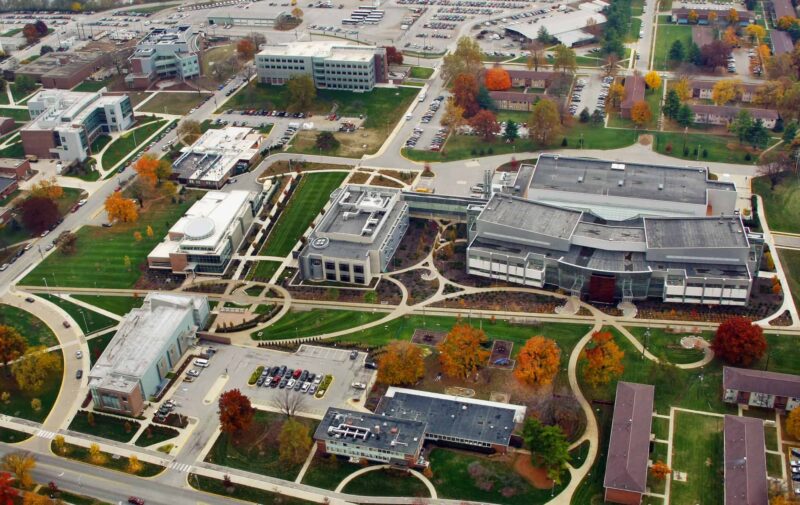
Designed by Purdue students in the service-learning program, Engineering Projects in Community Service, and executed by Indianapolis artist Jeff Larimore, the installation includes a 45-foot- diameter sun made from 17.5 tons of aluminum surrounded by scale-model planets in 6-foot walls. It’s lit during evening hours.
The sculpture hints at the depth and breadth of work occurring in the park, conceived in 2001, with construction ongoing.
A PEEK INSIDE
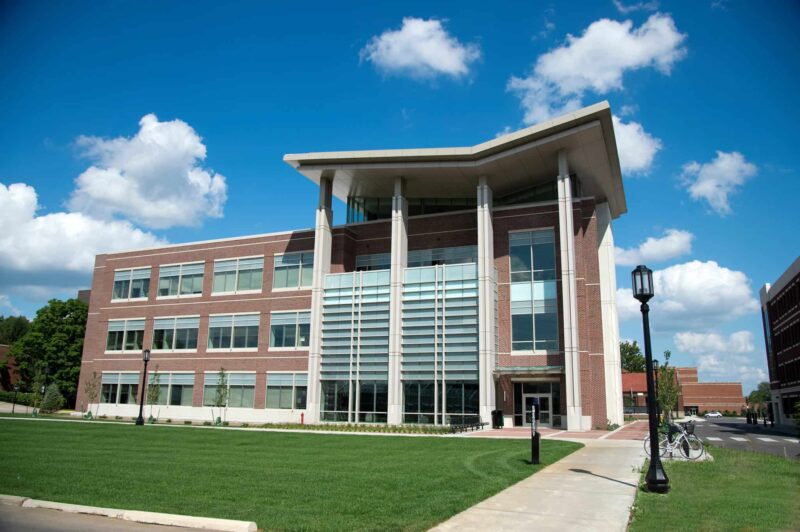 Three buildings welcome visitors. Birck Nanotechnology Center is one, where a self-guided tour takes visitors to their suite of cleanroom facilities, nanofabrication lab, teaching lab and otherareas.
Three buildings welcome visitors. Birck Nanotechnology Center is one, where a self-guided tour takes visitors to their suite of cleanroom facilities, nanofabrication lab, teaching lab and otherareas.
“The clean room is pretty neat to see,” says Nicole Finley, engagement coordinator for Discovery Park. “Visitors will see scientists in their jumpsuits—we call them ‘bunny suits.’”
Nearby, the Burton D. Morgan Center for Entrepreneurship—the first building in the park—fosters and stimulates the understanding and application of entrepreneurship with faculty and students across the Purdue campus and with stakeholders throughout Indiana and the world.
Impressive for its research space is the Bindley Bioscience Center, the third building open to visitors, by booking a tour in advance. Its researchers explore infectious diseases, metabolomics, biomolecular screening and other areas.
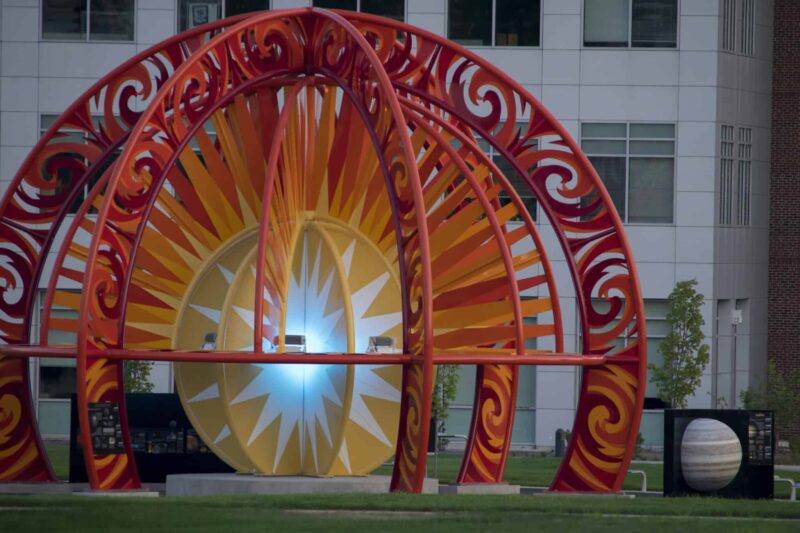
Also in the park: >>DRUG DISCOVERY FACILITY, houses Purdue Life Sciences Institutes, and is designed to promote the discovery, design and development of new drugs, and;
>> HALL FOR DISCOVERY AND LEARNING RESEARCH, with an instrumentation lab focused on developing new technologies for clinical diagnostics, environmental monitoring and sensor technologies for clinical diagnostics, environmental monitoring and sensor technologies;
>> GERALD D. AND EDNA E. MANN HALL, houses the Centers for the Environment, Climate Change Research and Food Security, Regenstrief Center for Healthcare Engineering, the Purdue Policy Research Institute, others; and
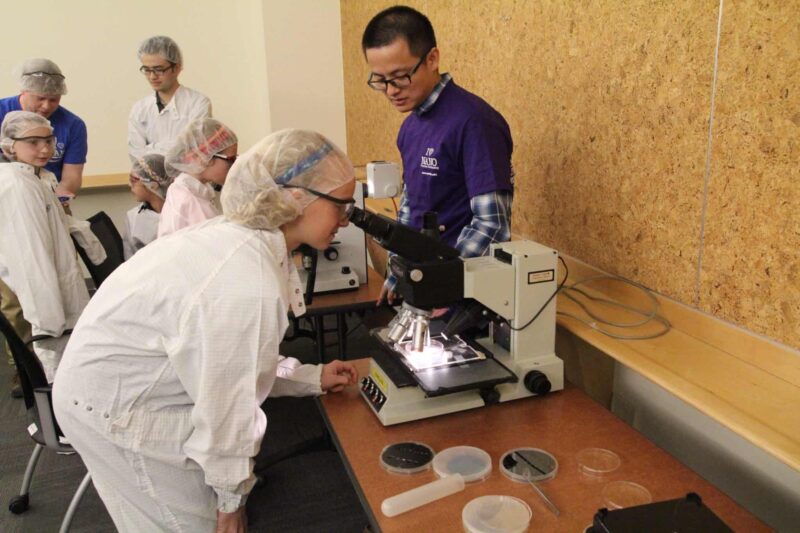
>> THE MULTIDISCIPLINARY CANCER RESEARCH FACILITY, connected to the Bindley Biosciences Center, is where interdisciplinary teams of researchers work on several different types of cancers. The facility also enables research in nanomedicine with access to a pass-through lab to the Birck Nanotechnology Center.
“A visit to Discovery Park is inspiring,” says Finley. For individuals and families traveling on their own, she recommends the VOSS sculpture, Birck Nanotechnology Center and Burton D. Morgan Center.
“Visitors delight in the VOSS sculpture—it’s worth spending some time, and many take photos.” For those wanting a closer look, she schedules guided tours that also include the Bindley Bioscience Center. “Our tours give groups insights into building features and the work going on, which we proudly point out is global in impact and occurring here.”
For more information visit purdue.edu/discoverypark/.


